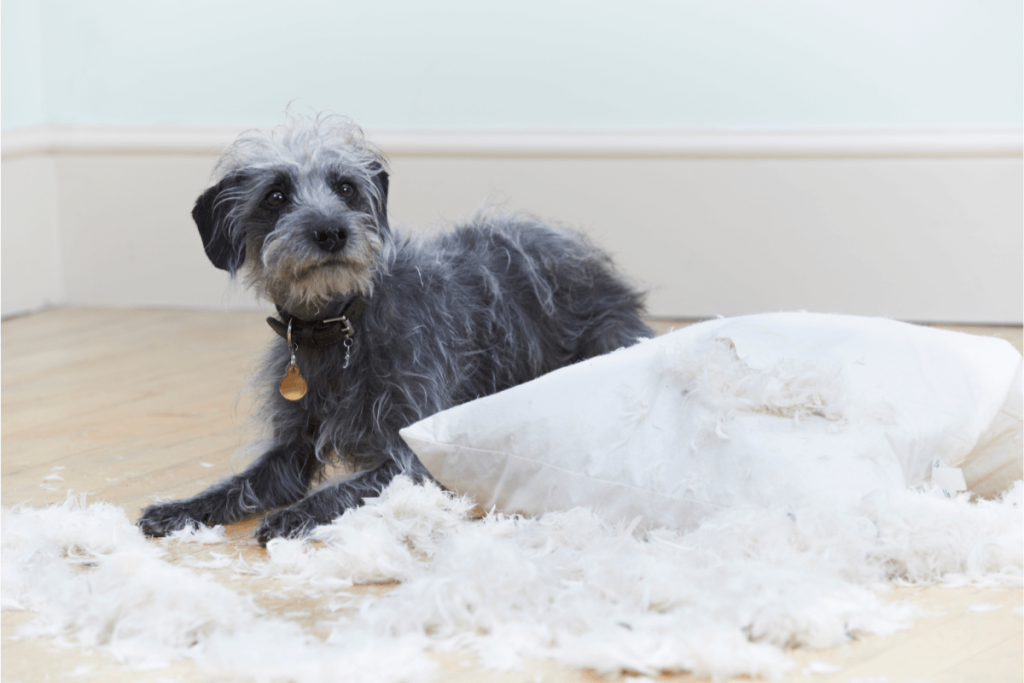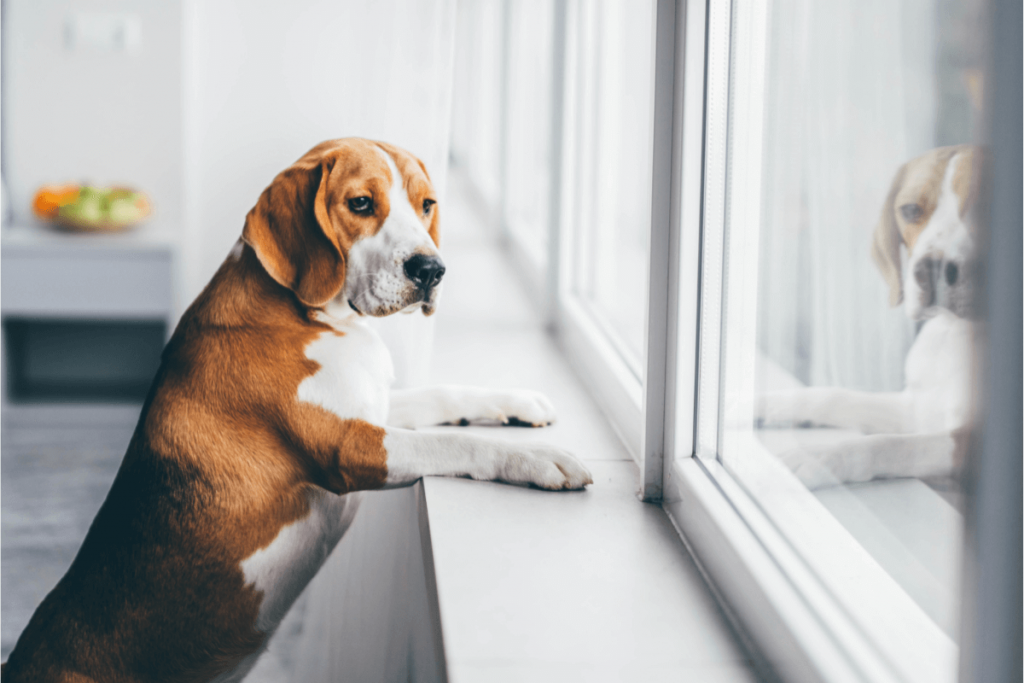Separation anxiety is one of the most common causes of anxiety in dogs, with experts estimating that it affects up to 40% of canines.
So how do you know if your dog is suffering from separation anxiety and what can you do about it? Read on to find out more.
What is separation anxiety in dogs?
Separation anxiety occurs when a dog gets highly stressed when left alone. Dogs are a highly social species, so it’s not surprising that some struggle to cope when being left by themselves. It’s not clear-cut why some dogs suffer from separation anxiety and some don’t, but it can be triggered by a particular scenario or event.
This could be due to:
- Your dog suffering a bad experience when away from home (such as staying with a pet sitter or at a boarding kennel; or
- A change to the household such as a new house, baby or another pet.
One major trigger that we have seen with patients at our small animal clinic is dogs who were used to their owner working from home, and now they have returned to the office, they are becoming highly stressed.
What are the signs of separation anxiety?
Symptoms of separation anxiety typically occur when your dog becomes aware that you are about the leave the house, and while you are away. These behaviours can include:
- Destructive behaviour, such as chewing your belongings or digging up the garden
- Increased barking, howling or whining when you leave the house
- Shaking or shivering
- Continual pacing
- Toileting accidents (when fully toilet trained)
- Persistent licking or chewing of feet, legs or tail
- Scratching at doors and windows in an attempt to get out of the house
- Loss of appetite
- Vomiting and/or diarrhoea

What can I do to help my dog?
It’s important not to ignore your dog’s anxiety and resultant symptoms. The earlier you can seek help the better, as behavioural issues can escalate if left untreated.
If your dog is displaying anxious behaviour, the first step is to consult with your vet to rule out any medical issues such as illness, disease or chronic pain that may be causing the above symptoms. Your vet will also discuss with you how you can help your dog feel calmer when left alone. These could include:
- Keep to a set routine when it comes to eating, exercise, bedtimes and when you leave and return from work
- Don’t make it a big deal when you leave for the day and when you return
- Exercise your dog in the morning
- Provide your dog with toys and puzzle feeders to keep them mentally stimulated
- Synthetic pheromones such as Adaptil
- Desensitisation training, such as picking up your keys or putting on your shoes and remaining in the house. Then advance to asking your dog to “stay” while going into another room and closing the door, gradually increasing the amount of time you stay apart
- Medication for dogs with more severe separation anxiety
We’re here to help
Separation anxiety can be just as stressful for pet owners as it is for dogs. If you are concerned that your pooch may be displaying separation anxiety, please bring them in for a consultation so we can formulate a plan to get them back to their happy and calm self as soon as possible.
To schedule an appointment with one of our small animal clinic vets, book via our website or call 08 8318 1801.



